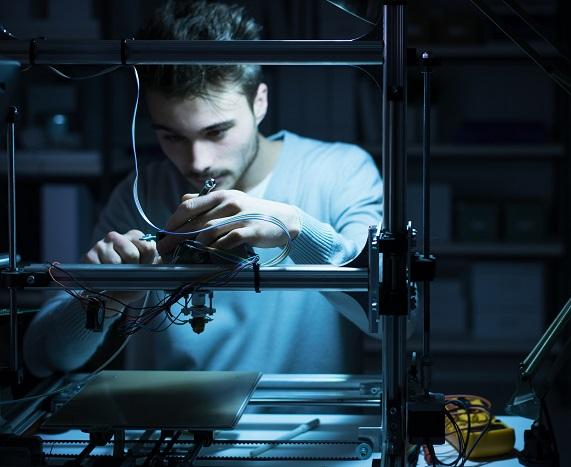Chief Economic Strategist
- FMA
- The Fabricator
- FABTECH
- Canadian Metalworking
Our Publications
Categories
- Additive Manufacturing
- Aluminum Welding
- Arc Welding
- Assembly and Joining
- Automation and Robotics
- Bending and Forming
- Consumables
- Cutting and Weld Prep
- Electric Vehicles
- En Español
- Finishing
- Hydroforming
- Laser Cutting
- Laser Welding
- Machining
- Manufacturing Software
- Materials Handling
- Metals/Materials
- Oxyfuel Cutting
- Plasma Cutting
- Power Tools
- Punching and Other Holemaking
- Roll Forming
- Safety
- Sawing
- Shearing
- Shop Management
- Testing and Measuring
- Tube and Pipe Fabrication
- Tube and Pipe Production
- Waterjet Cutting
Industry Directory
Webcasts
Podcasts
FAB 40
Advertise
Subscribe
Account Login
Search
Digitally assisted manufacturing can help revive U.S. industry
The U.S. can jumpstart a new generation of manufacturing entrepreneurs with 3D printing and other digital technologies
- By Michael Mandel
- February 3, 2019
- Article
- Additive Manufacturing
The text below is excerpted from the second in a series of blogs titled “New Ideas for a Do-Something Congress,” published by the Progressive Policy Institute, a Washington, D.C., think tank.
U.S. manufacturing productivity is lagging.
One problem is that many small and medium-size factories have been stuck with old technologies and aging equipment because the owners don’t have the funds to modernize. As a result, the price charged by domestic factories has risen, and the penetration of Chinese products into domestic markets has continued to increase.
Digitally assisted manufacturing technologies are potential game-changers for U.S. manufacturing. Local factories using 3D printing, robotics, or similar advances could, for instance, produce customized and locally designed products–better-fitting clothing, more-comfortable furniture, and customized equipment for businesses–at a price overseas mega-factories can’t match.
Moreover, there’s increasing evidence that digitization can open new markets and create new jobs. Even the most automated technologies require loads of skilled workers to do the more-complicated tasks machines can’t handle.The Progressive Policy Institute advocates a national push to create 50,000 new manufacturing startups across the country to encourage the rebirth of American manufacturing ingenuity at the local level. If each startup employed 20 people, on average, that would mean 1 million new jobs.
The goal is to get scale on new production technologies across the country–not just in one or two centers. We are not talking about industrial policy, or protectionism, or bringing back old and dying industries. Rather, the goal is to help accelerate the next wave of manufacturing prosperity.
We advocate a three-part program:
1. Increase access to technology. It’s essential to provide local manufacturing entrepreneurs access to the latest technologies to test out their ideas.
2. Guarantee federal loans. Existing small and medium-size manufacturers need help getting funding for the adoption of the new technologies. That means federal loan guarantees, based on an existing but unutilized program.
3. Fund federal research. At the national level, Congress should budget $300 million to fund federal research to develop the underlying standards for online manufacturing platforms.
Click here to read the entire blog.
About the Author
About the Publication
- Podcasting
- Podcast:
- The Fabricator Podcast
- Published:
- 04/16/2024
- Running Time:
- 63:29
In this episode of The Fabricator Podcast, Caleb Chamberlain, co-founder and CEO of OSH Cut, discusses his company’s...
- Trending Articles
- Industry Events
16th Annual Safety Conference
- April 30 - May 1, 2024
- Elgin,
Pipe and Tube Conference
- May 21 - 22, 2024
- Omaha, NE
World-Class Roll Forming Workshop
- June 5 - 6, 2024
- Louisville, KY
Advanced Laser Application Workshop
- June 25 - 27, 2024
- Novi, MI




























